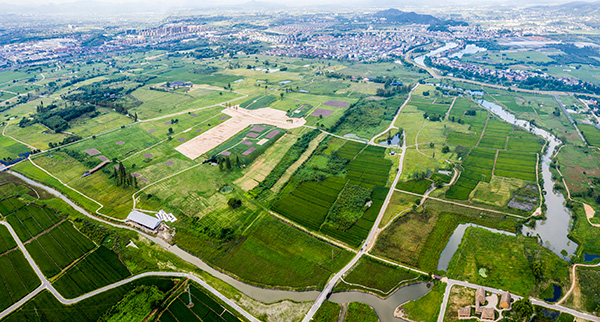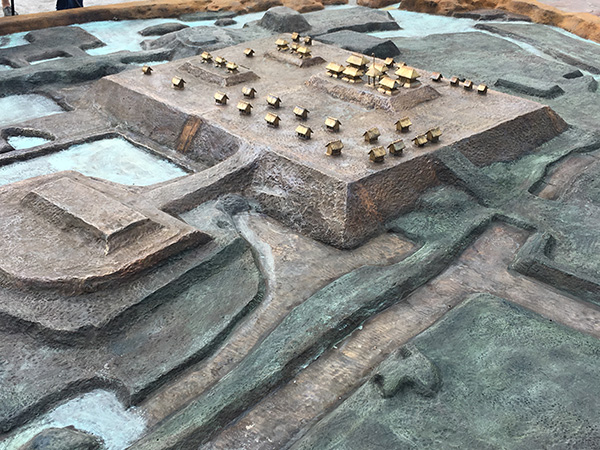China's Liangzhu Ancient City unveils 3D replicas of 5,000-year-old wooden pillars for first time
13:59, 11-Jul-2021
Updated 14:43, 11-Jul-2021
Hong Yaobin
Six restored giant wooden pillars of an ancient palace at the Archaeological Ruins of Liangzhu City, a UNESCO World Heritage Site in east China's Zhejiang Province, have been unveiled to the public for the first time.
Made with 3D printers, the columns on display are high-tech, full-scale replicas of some 5,000-year-old components unearthed at the archaeological ruins of the ancient city that existed between 3300 B.C. and 2300 B.C.
According to the archaeologists, the components date back to the period when the Mojiaoshan Palace was constructed.
A total of 15 giant wooden components were found in the watercourses at the 5,300-year-old archaeological site. The discovery showed that people living at the time were able to build large-scale structures, such as palaces, over 5,000 years ago.
More:
https://news.cgtn.com/news/2021-07-11/Liangzhu-Ancient-City-unveils-restored-5-000-year-old-wooden-pillars--11NU8qChgWs/index.html
- video at link -
~ ~ ~
Archaeological Ruins of Liangzhu City included in UNESCO World Heritage list
By Wang Kaihao | chinadaily.com.cn | Updated: 2019-07-06 14:46

A bird view of the Archaeological Ruins of Liangzhu City.[Photo by Jiang Yangbo/For China Daily]
The Archaeological Ruins of Liangzhu City in Hangzhou, Zhejiang province, which date back 5,300 years, were inscribed onto the UNESCO World Heritage list on Saturday during the 43rd session of the World Heritage Committee in Baku, Azerbaijan.
The ruins, whose core area covers 14.3 square kilometers in the northwest of Hangzhou, is considered an important representation of early urban civilization, with rice-cultivating agriculture as the economic foundation.
The heritage site includes city ruins with palace and altar remains, 11 early-stage dams, and high-level cemetery sites. The Neolithic civilization was thought to last about 1,000 years until 4,300 years ago, according to archaeologists' research.
The site is also known for its abundance of ceremonial jade, which shows a complicated ritual system and indicates a realm with a combined authority of deity and kingship.
. . .

A model of Mojiaoshan Terrace, which is believed to be the palatial complex, is displayed in the archaeolgical ruins park of Liangzhu city.[Photo by Wang Kaihao/China Daily] Photo #4
More images:
http://www.chinadaily.com.cn/a/201907/06/WS5d2043c1a3105895c2e7c04d_1.html

